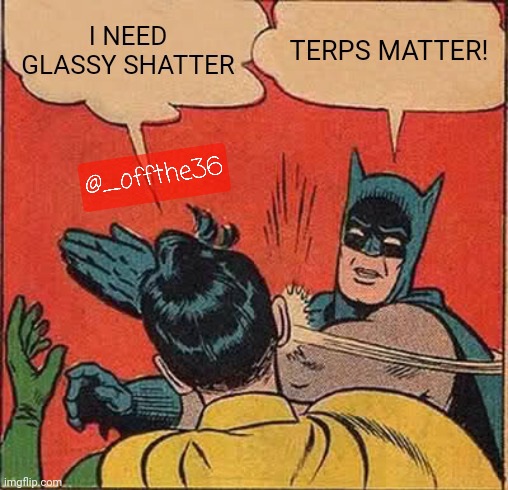Terpenes and wax content are big ones
Etoh shatter that has been dewaxed shatters like glass
Terpenes and wax content are big ones
Etoh shatter that has been dewaxed shatters like glass
@anon16547145 said it
Terpenes are a diluant to many and you can t get glass They are a liquid at room temp
Fats and waxes some are a solid at room temp and help hardening your shatter
Fine line thou to much fats and your shatter can turn opaque
Ph it seems that a slight acitic ph helps
Passing your solution treu a acitic powder gets you there
You can do some things like extract at -40C, or lower (-60C or lower for best results), perform a winterization on a product extracted at -39C and warmer, like @Roguelab said, and pass through the right powders, purge at a slightly higher temp to lower the amount of terpenes, and there’s tons more hints. tips, and tricks if you do some searching around the forum

As does BHO that has been winterized in EtOH.
Sometimes material has a lot todo with it . the fresher the better. And how the material is stored.
I also have stored material in a room with a dumidifier to keep that as dry as possible.
While many people say fats/waxes play a large role in stability, I beg to differ. Even my runs that I’ve dewaxed multiple times, could come out extremely stable. Blue dream for instance, is known to be extremely stable in extract form. I’m sure fats/waxes play a role in that stability, but not as much as terpene and cannabinoid content do imo.
I agree bud runs with lots of terps dont come out that stable. Sometimes after vac oven i put into convection oven to dry out terps and not evap them off
Not actually a thing.
Just did it other week? Had a terpy batch from bud run . outa vac oven into forced air convection at low temp dried out in 2 day?
It was a batch of crumble
Drying out = terpenes evaporating
Im sure some loss not all. I dont have in house testing bit it was definately more tasty than trim runs
Its mostly a factor of ensuring that no decarboxylation occurs during drying, storage, and processing.
thca uses the acid carboxyl group tail as a functional group and without it, cannot form a crystal lattice.
Acidic conditions promote crystalization
(I don’t know why, @Photon_noir @tokesandtinkery @mitokid care to chime in?)
Presence of unstable liquid terps also plays a part, sure- but the right terp combo will aid stability- terps are very interesting and fickle things.
The people telling yall that terps are liquid at room temp, are wrong, this is empirically false.
the most commonly used terpene i can think of is a solid crystal and there are many other terps that crystalized.
The blue diamond willbilly tek uses a terpene to co-crystalize and form a lattice- so maybe look into which ones have high ratio of solid terps and find a strain that has more of them.
I wouldnt try to make shatter with say, limonene heavy strains, or linalool
Wanna send me a terp analysis so i can see?
Nucleation is more common with a cleaner product such as Live and CRC
Basically that ensures that the carboxylic acid functionality stays protonated as THCaH instead of disassociate into THCa- and H+. I cannot really imagine a naked proton in pentane, there gotta be some amount of water molecules around to allow full separation of the two species, particularly for the proton.
If the proton doesn’t have anywhere else to go - helped by a shell or cluster of water molecules - why wouldn’t it be close to the carboxylate anion? Opposite charges attract.
Maybe the acidic conditions helps by “binding up” minute presence of water in the crystallization experiment by it having to “solvate” the added acid.
Less around to allow for THCaH to disassociate?
I’ll reiterate the short version, @Rowan … THCa crystallization is mediated by OH groups that can form hydrogen bonds with one another. Since each THCa molecule has two (2) OH groups that are not too close together, each THCa can H-bond to two (2) other THCa molecules, thus repeating in a lattice structure.
If other molecules with OH groups (like EtOH) or errant hydroxide ions (Bronstead base/alkali) are present, they can interfere with the THCa forming H-bonds with each other… either by solvation in the former case or by ionic disassociation in the latter.
A little bit of acid can protect against the disassociation of THCa, like @mitokid said.
So when people have issues with “sugaring”extract being due to water content, it has to do with ionic disassociation?
I completely agree. A cleaner solution will always nucleate faster due to less impurities being present.
I think so.